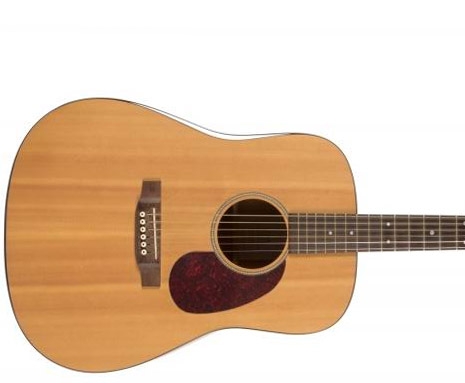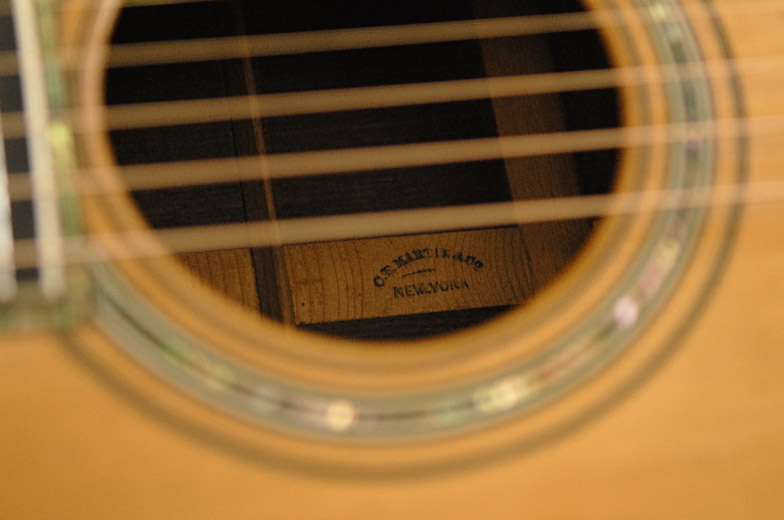


Martin and Gibson have extensive records showing that some instruments were sent back and forth between the factory and dealers several times before finally finding a home. Some instruments were re-worked and re-sold as new, years after they were actually made. As a result, many instruments at Martin and Gibson remained unsold for years before being shipped, and quite a few were returned by dealers to the manufacturers for reconditioning, upgrading, or in exchange for new merchandise. During the Great Depression, Martin, Gibson, and other manufacturers went to great lengths to please dealers and customers, as these were extremely hard times – almost unimaginable by current standards. The manner in which manufacturers conducted business when this instrument was made is remarkably different than today. This work is never perfectly done, but mid-’20s work would have been tighter than this example. When the top of the body is viewed from the inside, there are gaps that have not been filled in where the braces intersect with the kerfing. Internal inspection of this guitar reveals that small pieces of kerfing have been spliced in on either side of the brace where they intersect with the kerfing strip. It’s also clear that in the recent past, the fingerboard was professionally replaced along with original style snowflake inlays and modern frets rather than the bar frets used prior to late 1934. Beyond that, a 1924 00-45 would not have a pickguard, there is no pearl trim around the outside edge of the body, and the small white/black plastic purfling strip on the back differs from the wood purfling used during the ’20s. The pickguard is also not typical of Martins made prior to 1930. Also, rather than the ’20s pyramid-end bridge, it has a belly bridge of a style not used until 1930. While the guitar mostly conforms – it has a 12-fret mahogany neck, slot head, Brazilian rosewood back, sides, and peghead veneer, Adirondack spruce top, ebony fingerboard and bridge, snowflake fingerboard inlays, torch peghead inlay, white ivoroid bindings on the neck and body, and style 45 abalone trim on the top and sides, it deviates in a few ways and in its date of manufacture the back of the body lacks the typical style 45 abalone body-edge trim to match the front and the sides.
MARTIN GUITAR SERIAL NUMBERS SERIAL NUMBER
The neck block on the Martin featured here is stamped with the model designation 00-45, but the serial number 21596 is consistent with a manufacture date of 1924, so, even a quick inspection leads an observer to suspect it has been re-worked.
MARTIN GUITAR SERIAL NUMBERS SERIAL NUMBERS
They did not, however, stamp serial numbers on guitars until 1898, and didn’t stamp model designations on the neck block until 1931. Martin has remarkably accurate records going back to the 1830s, with the exception of a missing ledger from the 1840s. As a result, we are able to learn more about the history of these instruments each day. Martin and Gibson maintain records dating to their earliest days, but only in recent years and through hours of research have many of they been properly organized and archived in a manner that makes the information readily available and easy to use. Luckily, one can often find remarkably detailed information about the history of a particular instrument by researching factory records.


To complicate matters, custom-order instruments were built with non-standard specifications, while other instruments were sent back to the manufacturer for reconditioning, upgrading, or repair. No matter how skilled a collector, dealer, or repairman may be, they simply cannot look at an instrument and determine exactly how many years ago a repair or modification may have been done. Still, modifications can be difficult to detect, and manufacturers’ records are often the only way to map an instrument’s history and determine whether it has been repaired or modified. Instrument courtesy of George Gruhn.When trying to determine originality, guitar dealers and collectors have a tendency to study instruments with the care of a forensic pathologist.


 0 kommentar(er)
0 kommentar(er)
